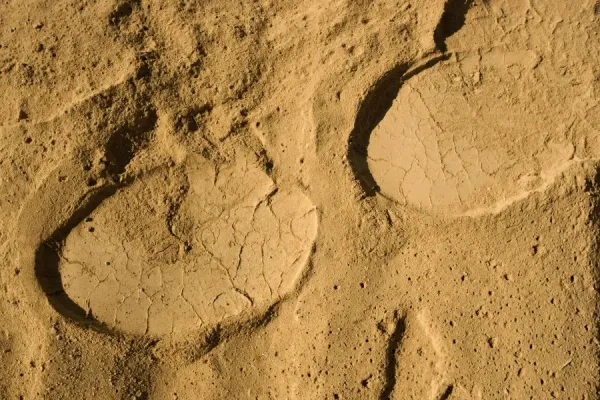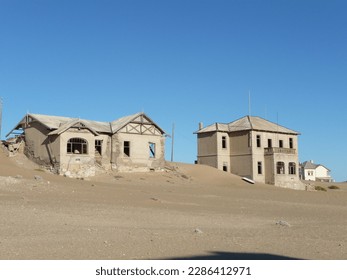Namibia: A Solo Female Conservationist's Journey

The dry desert air hit me the moment I stepped out of Hosea Kutako International Airport in Windhoek. As a solo female traveler and conservationist, I’d dreamed of this moment for years. Namibia, a land of stark beauty and resilient wildlife, awaited. This wasn't just a vacation; it was a mission to understand Namibia's unique ecosystem and the challenges facing its incredible fauna. My adventure focused on documenting crucial conservation initiatives, particularly the work of the Namibia Nature Foundation and Desert Lion Conservation. My goals were twofold: firstly, to document the Namibia Nature Foundation's progress toward increasing rhino populations in Etosha National Park by 15% over the next five years, and secondly, to highlight Desert Lion Conservation's work in reducing human-lion conflict in the Kunene region by 20% in the next three years.
Sossusvlei: Where Giants Sleep and Sustainability Awakens
My journey began in Sossusvlei, a landscape sculpted by wind and time. For three days, I was immersed in the raw beauty of the Namib Desert. Waking before dawn, I climbed Dune 45, camera in hand, eager to capture the sunrise. The iconic image unfolded before me, the dune's sharp crest illuminated by the first rays of light. I captured it with my NIKKOR Z 24-120mm f/4 S lens, ISO 3200, f/2.8, and a 30-second exposure on a sturdy tripod. The technical challenge was worth it; the photograph encapsulated the magic of Sossusvlei.
Beyond the visual spectacle, I was keen to understand the region's commitment to sustainability. At the Sossusvlei Desert Lodge, I witnessed water-wise landscaping in action, an impressive feat in such an arid environment. The lodge's commitment to minimizing its environmental impact was evident in every detail, from solar power to waste management.
Deadvlei, a ghostly forest of ancient camel thorn trees, presented a different perspective. The stark beauty of this area is both captivating and fragile. The challenge of preserving this unique landscape, especially in the face of increasing tourism, is significant.
I also had the privilege of experiencing a community-based tourism initiative in Sesriem Canyon. Local guides shared their profound knowledge of the area's geology and history, painting a vivid picture of the forces that shaped this dramatic landscape. Learning about the canyon through their eyes offered a richer, more meaningful experience. This showcases Namibia community based tourism at its best, enabling financial benefits to directly reach the Namibian people, allowing them to sustainably prosper.
Etosha National Park: A Symphony of Wildlife and Conservation
Etosha National Park was next, four days of immersing myself in a wildlife spectacle. I aimed to document the progress of the Namibia Nature Foundation's efforts to increase rhino populations. I spent hours at the Okaukuejo waterhole, witnessing the drama of the African bush unfold. Elephants, giraffes, and zebras gathered to drink, creating a breathtaking scene, especially during the golden hour. I captured these moments using my Canon EOS R5 with a 100-400mm lens.

I also documented the community conservancies surrounding the park. These conservancies play a vital role in wildlife management, creating buffer zones between the park and surrounding farmlands. Compensation programs for livestock losses due to elephant depredation are crucial for fostering positive relationships between communities and wildlife. The Etosha National Park conservation efforts require a multifaceted approach that places local communities and wildlife conservation at the forefront.
Protecting black rhinos is a top priority. I observed the use of camera traps to monitor their movements, providing valuable data for conservation strategies. Another innovative technique I learned about was the use of chili pepper fences to deter elephants from entering farmland near the park's southern boundary. These fences, while simple, have proven surprisingly effective in reducing human-wildlife conflict. Consider volunteering on a Namibia wildlife conservation project.
Kunene Region & the Himba Tribe: Ancient Wisdom, Modern Challenges
The Kunene Region offered a completely different perspective. I spent three days with a Himba community near Opuwo, learning about their traditional way of life and their remarkable resilience in the face of a harsh environment. Their traditional water management techniques are a testament to their ingenuity. I was fascinated by their use of underground water storage lined with clay and their practice of rainwater harvesting from specially constructed rock formations.

The Himba also possess extensive knowledge of drought-resistant plant species. I learned about the Acacia erioloba tree, a vital source of livestock feed during dry periods. Spending time with the Himba was truly eye opening. Here are some ways to respectfully interact with the Himba Tribe:
- Ask permission before taking photos.
- Learn a few basic greetings in Otjiherero.
- Purchase handicrafts directly from the community.
- Respect their traditional customs and beliefs.
Documenting the work of Desert Lion Conservation was a key focus in the Kunene region. Their efforts to track lion movements and mitigate human-wildlife conflict are essential for the survival of Namibia's desert-adapted lions. I witnessed the team relocating a problem lion away from a local village, a carefully planned operation designed to protect both the lion and the community's livestock. The human-wildlife conflict can be minimized with careful planning and dedicated teams.
Swakopmund & Marine Conservation: Protecting the Ocean's Bounty
My journey concluded in Swakopmund, where I turned my attention to Namibia's marine biodiversity. I visited the Namibian Dolphin Project, learning about their research on dolphin populations and the impact of human activities on marine ecosystems. The establishment of Marine Protected Areas (MPAs) along the Skeleton Coast, including the Walvis Bay MPA, is a crucial step in safeguarding this fragile environment.
Stricter regulations on fishing practices are also essential to prevent overfishing. Research is also being conducted on the impact of plastic pollution on seabirds, highlighting the urgent need to address this global threat.
A Taste of Namibia: Local Flavors, Sustainable Practices
My culinary experiences in Namibia were as diverse as the landscapes. In Windhoek, I sampled Kapana (grilled beef) from a street vendor, a delicious and authentic taste of Namibian street food. During my time with the Himba community, I enjoyed a traditional meal featuring Omurunga (fermented porridge) and game meat. Many lodges are also making a conscious effort to source food locally, supporting Namibian farmers and reducing their environmental footprint.
Photography in Namibia: Challenges and Rewards
Photographing in Namibia's harsh desert environment presented its own set of challenges. The extreme heat, sand, and dust required careful protection of my equipment. I relied on the Sony a7S III for low-light photography and a GoPro Hero 11 for capturing action shots. Here are some photography tips for beginners:
- Protect your equipment from sand and dust.
- Use a lens hood to reduce glare.
- Shoot during golden hour for the best light.
- Be patient and respectful of wildlife.
Namibia: A Call to Responsible Travel
My journey through Namibia was an unforgettable experience. I witnessed firsthand the dedication of conservation organizations, the resilience of local communities, and the breathtaking beauty of the natural world.
I encourage you to visit Namibia responsibly, supporting eco-lodges and community-based tourism initiatives. To learn more about supporting conservation efforts, please visit the Namibia Nature Foundation and Desert Lion Conservation websites. Consider donating or volunteering to support their vital work.
Let us all play our part in protecting Namibia's unique natural heritage for future generations.
Support local conservation efforts in Namibia.
Instagram Reel Script:
Concept: Time-lapse video showcasing the Himba tribe's traditional water harvesting techniques.
Hook: (0-1 second) Extreme close-up shot of water droplets rapidly collecting on a rough, textured rock surface, cinematic 4K quality, shot on RED. Sound: A crisp, clean “drip…drip…drip” sound effect.
Scene: (1-5 seconds) Slow, orbiting shot around a traditionally dressed Himba woman carefully guiding rainwater through a series of channels carved into the rock. Golden hour lighting, creating dramatic shadows and highlighting the textures of the rock and the woman's skin. Camera movement: Smooth, controlled orbit.
Twist: (5-7 seconds) The woman smiles directly at the camera, revealing a missing front tooth, and then points to a hidden underground water reservoir, suddenly revealing a surprisingly modern plastic tap emerging from the rock. The twist is the juxtaposition of ancient methods with modern technology. Emotion: Surprise and appreciation for ingenuity.
Audio: Blend of traditional Himba music with a subtle, modern electronic beat.
Caption: "Centuries of Knowledge, A Future Secured. Witness the incredible water wisdom of the Himba people. #Namibia #WaterIsLife #Conservation #SustainableLiving #HimbaTribe #Travel #Africa #ResponsibleTourism"